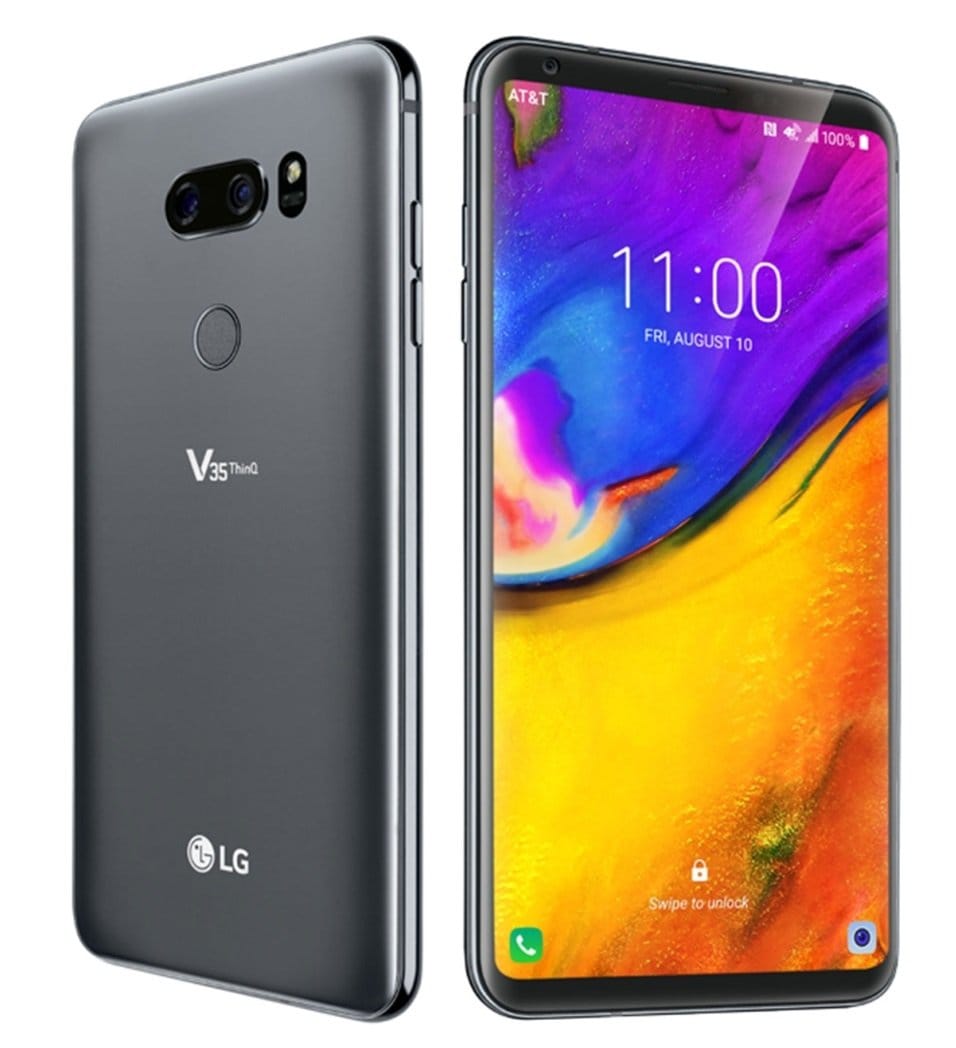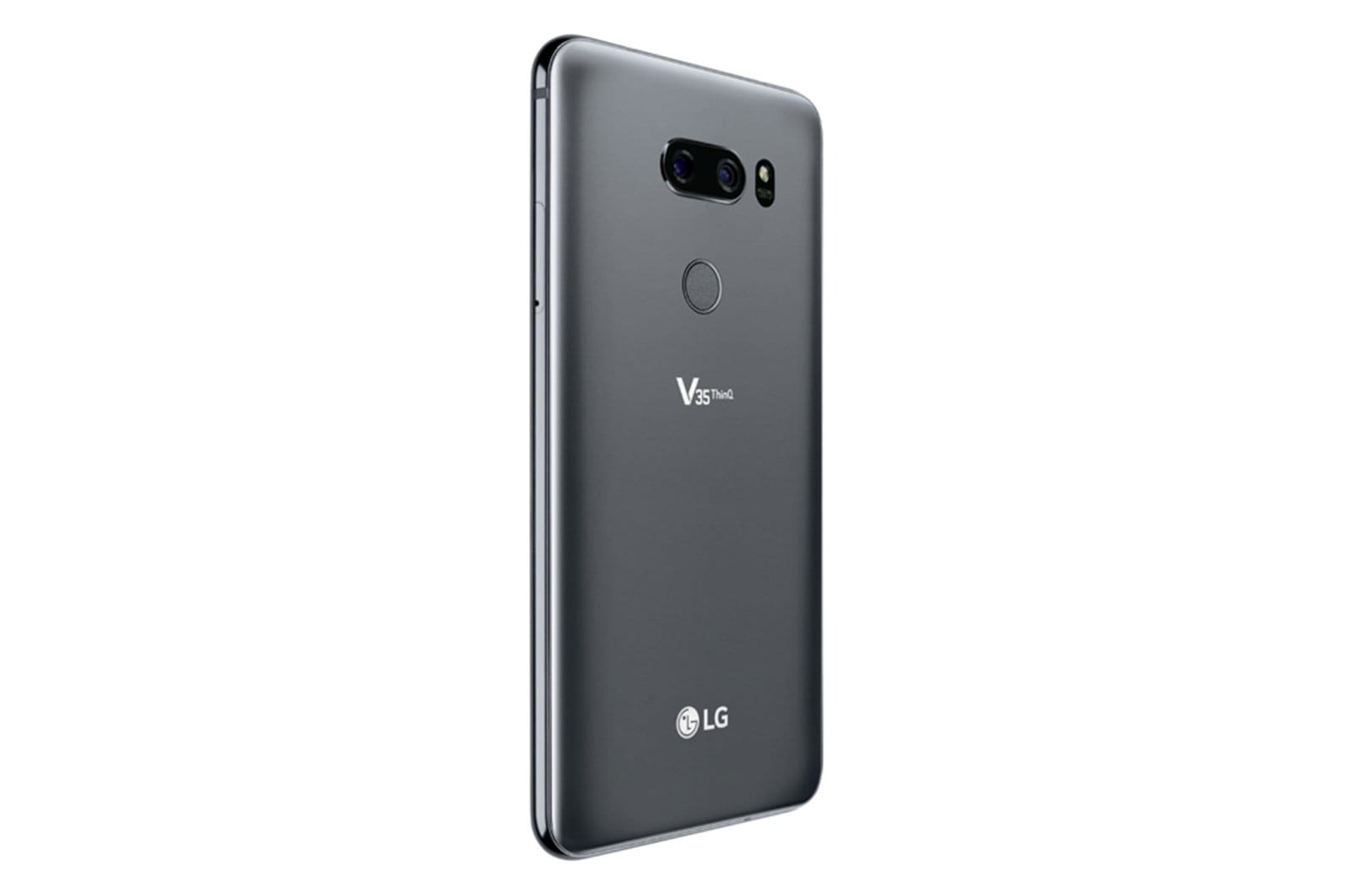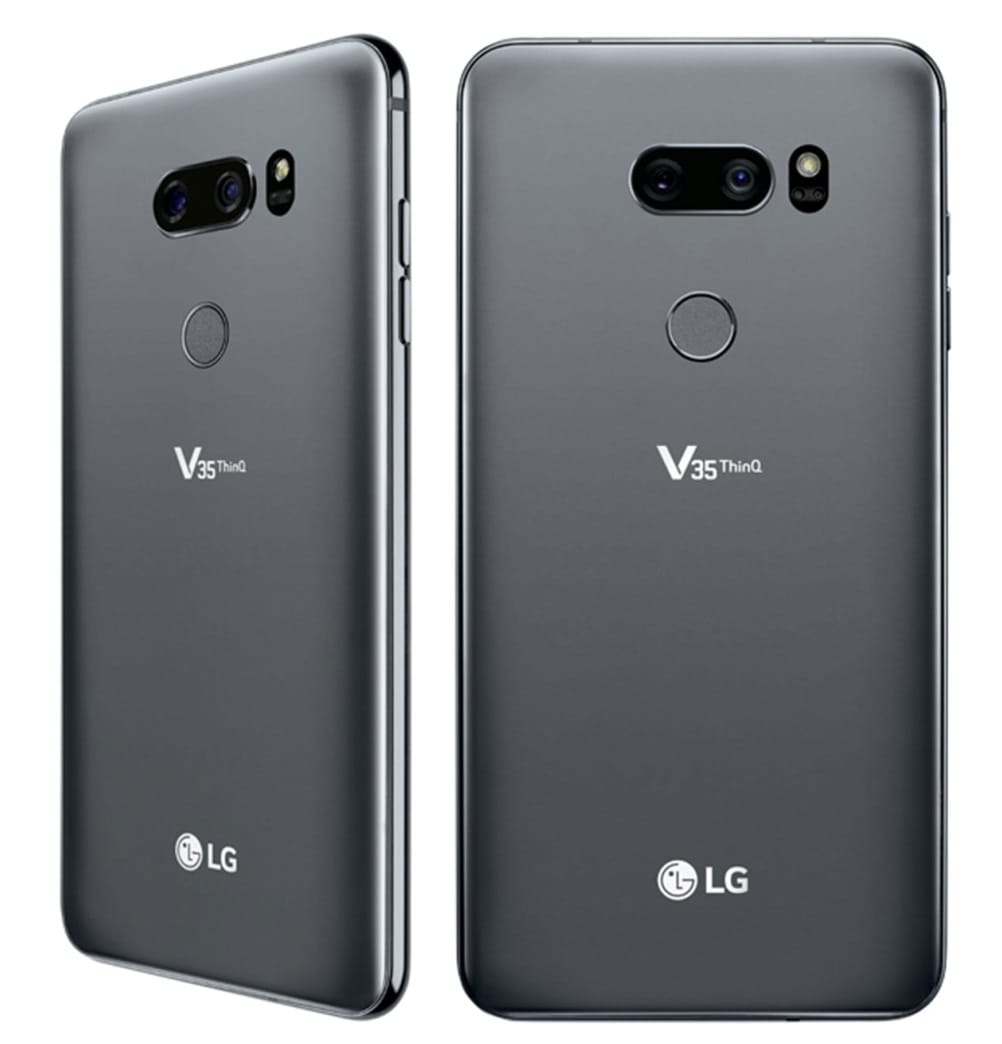LG has been doing a lot of thinqing lately and the result is a pretty messed up lineup of phones that comprises of the LG V30S ThinQ, LG G7 ThinQ and now we have the LG V35 ThinQ. The latter is our subject of the matter, but if you want to know more about the other two, we have them covered on the pages linked below.
Technically, the LG V35 ThinQ shouldn’t exist and in its place, AT&T, the exclusive handler of the phone among the big four American carriers, should be selling the LG G7 ThinQ. With this in mind, you might want to get used to the fact that the V35 ThinQ is basically a G7 in a V30 body.
LG V35 ThinQ specs

- 6-inch 18:9 QHD+ (2880 x 1440) OLED display
- Qualcomm Snapdragon 845 processor
- Dual 16MP+ 16MP main camera
- 8MP front-facing camera
- 64GB of expandable storage
- 6GB of RAM
- 3,300mAh battery
- Android 8.0 Oreo
- Extras: Bluetooth 5.0, USB-C, 3.5mm audio jack, Qualcomm Quick Charge 3.0, Wireless Charging, Super Bright Camera, 32-bit Hi-Fi Quad DAC and DTS:X 3D Surround Sound, NFC, Super Far-Field Voice Recognition, AI CAM, Google Lens, IP68 Water and Dust Resistance, MIL-STD 810G certification, Face Recognition, Fingerprint Sensor, etc.
As already pointed out, the LG V35 ThinQ has a design that resembles the V30 and V30S. However, on the inside, you’ll find hardware specs that largely mimic the LG G7. In fact, the only standout differences between the V35 and G7 can be seen on the display screen, amount of RAM and the battery capacity.
It seems folks at A&T aren’t fans of the notch, which vaguely explains why the telco is the only one carrying the LG V35 ThinQ while others have stocked the LG G7 in all its notch glory. However, this is only true when talking about carriers because outside of this, the V35 ThinQ can also be found on Google’s Project Fi.
Yes, besides the Nexuses, Pixels and Moto X4 Android One, the LG V35 is also compatible with Fi, which should be a welcome idea for those who have always wanted to join the platform but couldn’t due to the limited number of devices supported outside the Google phones. Other phones that recently joined support for Fi are LG’s very own G7 ThinQ and the Moto G6.

At a time when every other dual-lens camera setup on flagship smartphones is equipped with a depth-sensing secondary lens for portrait mode shots, LG is sticking to the more traditional setup that makes use of the second lens for wide-angle shots. This is definitely a USP at this point in time and many should enjoy it given the impressive combination of a super wide angle lens (f/1.9, 107-degree field of view) and a standard angle lens (f/1.6, 71-degree field of view) on the back. The front shooter is of similar take as well, where the 8MP lens can capture wide-angle shots of up to 80-degree field of view. Performance in low-light conditions shouldn’t be such a concern, too, thanks to the wide-enough f/1.9 aperture.
One of the standout features of the LG G7 ThinQ is the super-loud Boom Box speaker. Unfortunately, this doesn’t make its way to the V35 ThinQ. You are also not getting a dedicated power button, but the fingerprint sensor handles this just fine.
LG V35 ThinQ price and availability
 Being an AT&T exclusive, the carrier is the one calling the shots as far as prices are concerned. It’s no wonder the LG V35 ThinQ has a price tag of $900, but you can still opt for a 30-month plan that costs $30 per month. For comparison purposes, the phone that the V35 closely mimics, the G7, can be had for about $750 and its predecessor that it so much resembles in terms of looks, the V30S, can be purchased for about $200 less.
Being an AT&T exclusive, the carrier is the one calling the shots as far as prices are concerned. It’s no wonder the LG V35 ThinQ has a price tag of $900, but you can still opt for a 30-month plan that costs $30 per month. For comparison purposes, the phone that the V35 closely mimics, the G7, can be had for about $750 and its predecessor that it so much resembles in terms of looks, the V30S, can be purchased for about $200 less.
For those on Project Fi, there’s no escape either as Google will still ask for the same amount, although those who pre-order the device will get a $50 Fi service credit.













Discussion